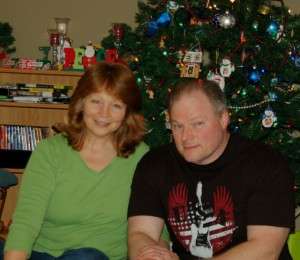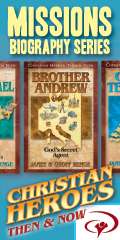On this tenth day of the 40 Days for Life campaign,
I have a few stories, a few more pictures — and good
news from London that should help get your day off to
a really exciting start.
—————————————————–
LONDON, ENGLAND
—————————————————–
Robert, who’s coordinating the first-ever 40 Days for
Life campaign in England, says the prayers of vigil
participants have helped save more two babies.
Praise God for his courage to bring this campaign
to London! Plus there’s another sign that shows how
this vigil is having an impact.
“It looks like Marie Stopes [the abortion facility]
has closed their doors today,” he wrote on Wednesday.
“And all their clients are turning up.” This certainly
suggests that the closure was unexpected. This same
abortion business was also closed last Saturday —
another day they are usually open.
Marie Stopes, by the way, is a major abortion chain
in the UK — not unlike the Planned Parenthood
network. Yet their Central London location is
apparently closing without notice during 40 Days for
Life. That is EXCELLENT news!
—————————————————–
LITTLE ROCK, ARKANSAS
—————————————————–
The 40 Days for Life team in Little Rock, Arkansas
reported three babies spared from abortion. One of
the pro-life counselors had a simple, direct message
for women entering the facility for abortion
appointments that really struck a chord:
“Ask to see the ultrasound.”
Showing the ultrasound image is something most
abortion centers don’t like to do. It offers instant
proof to a woman that a baby does indeed exist —
HER baby.
One very young couple that the counselor talked to
walked out of the facility with smiles — and their
ultrasound photo in hand. They took information about
a pro-life pregnancy center and left.
Another couple received the same simple message: “Ask
to see the ultrasound.” The counselor reports this
woman was possibly in the fourth month of pregnancy.
The couple went inside — but over the course of the next
hour, the woman came out crying twice. They came out
a third time — she was still crying — but this time
they left. No abortion!
To see a picture of some of the prayer volunteers in
Little Rock, please go to:
http://40daysforlife.com/blog/?p=1050
—————————————————–
TWIN CITIES, MINNESOTA
—————————————————–
Finally, I have a photo of David Bereit, the national
director of 40 Days for Life, speaking at a vigil
location in the Twin Cities area in Minnesota.
The vigil site is a hospital in St. Paul — a hospital
that has its own abortion unit where almost 700
abortions take place each year.
David just wrapped up a marathon visit to a bunch of
40 Days for Life vigils in Michigan. Look for e-mail
from David tomorrow with more big news!
To see a picture from this Minnesota event, please
go to:
http://40daysforlife.com/blog/?p=1050
I will be in Kokomo, Indiana tomorrow for a pro-life
event. If you’re anywhere near, please stop by! I’d
love to see you. For event information, you may go to:
http://tinyurl.com/2clzvuf
Here’s today’s devotional from Fr. Frank Pavone,
national director of Priests for Life…
—————————————————–
DAY 10 INTENTION
—————————————————–
Let us affirm the unborn by our language.
—————————————————–
SCRIPTURE
—————————————————–
Anyone who says to his brother, “Raca,” is answerable
to the Sanhedrin; anyone who says, “You fool!” will
be in danger of the fire of hell.
— Matthew 5:22
—————————————————–
REFLECTION by Fr. Frank Pavone, Priests for Life
—————————————————–
Before the schoolyard bully beats up his victim, he
calls him names. This is a way to dehumanize the
victim, and therefore make it easier to justify
attacking him.
In this verse from the Sermon on the Mount, Jesus
says that using dehumanizing language is sinful.
“Raca” was an Aramaic term of contempt. The respect
and love we are called to have for other human lives
is not limited to action alone; it also has to
manifest itself in language.
Professor William Brennan, in his book Dehumanizing
the Vulnerable: When Word Games Take Lives, traces
the dehumanizing language used to oppress various
groups of people in history, such as our African-
American brothers and sisters, or our Jewish brothers
and sisters in the Holocaust.
He then shows that the same kind of dehumanizing
language is used against the unborn, who have been
called “parasites,” “tissue,” and “medical waste,”
among other things.
What are we to do instead? We are to affirm one
another, including the unborn, with ennobling
language that inspires respect and love. The unborn
are precious children, they are our brothers and
sisters, they are the image of God. Let us multiply
the language of affirmation, as we hasten to the day
of their protection!












 "Oh that God would give every mother a vision of the glory and splendor of the work that is given to her when a babe is placed in her bosom to be nursed and trained! Could she have but one glimpse in to the future of that life as it reaches on into eternity; could she look into its soul to see its possibilities; could she be made to understand her own personal responsibility for the training of this child, for the development of its life, and for its destiny,--she would see that in all God's world there is no other work so noble and so worthy of her best powers, and she would commit to no other's hands the sacred and holy trust given to her." -JR Miller
"Oh that God would give every mother a vision of the glory and splendor of the work that is given to her when a babe is placed in her bosom to be nursed and trained! Could she have but one glimpse in to the future of that life as it reaches on into eternity; could she look into its soul to see its possibilities; could she be made to understand her own personal responsibility for the training of this child, for the development of its life, and for its destiny,--she would see that in all God's world there is no other work so noble and so worthy of her best powers, and she would commit to no other's hands the sacred and holy trust given to her." -JR Miller






